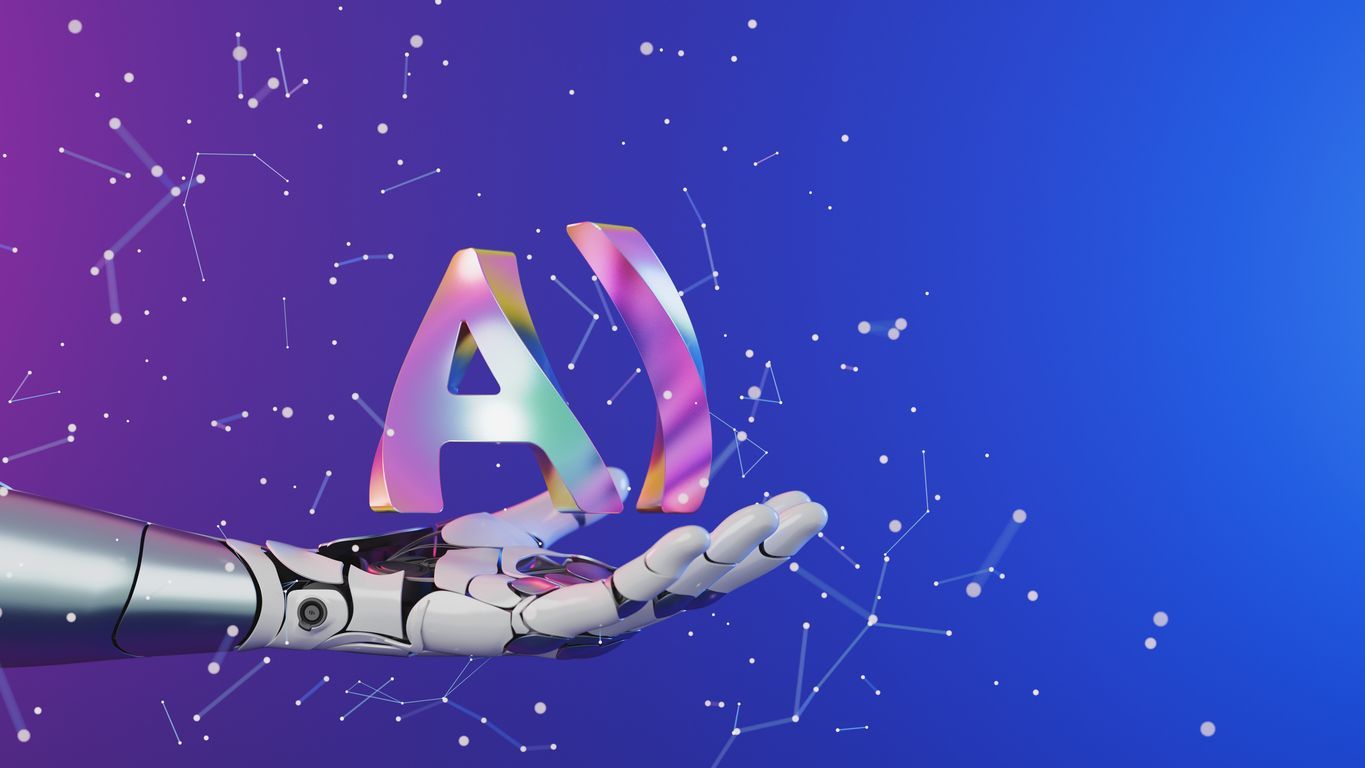The landscape of employee scheduling has undergone a revolutionary transformation with the integration of artificial intelligence. AI-powered scheduling tools are no longer futuristic concepts but essential components of modern workforce management. In today’s competitive business environment, organizations are increasingly turning to AI scheduling solutions to overcome the inherent complexities of employee shift planning, optimize labor costs, and improve overall operational efficiency.
Traditional scheduling methods often fall short in addressing the dynamic nature of today’s workforce needs, leading to inefficiencies, increased costs, and employee dissatisfaction. By leveraging machine learning algorithms, predictive analytics, and data-driven insights, AI transforms the scheduling process from a time-consuming administrative task into a strategic asset that balances business requirements with employee preferences. This comprehensive guide explores how AI improves scheduling in the workplace, the benefits it offers, and practical implementations across various industries.
The Evolution of Employee Scheduling Technologies
The journey from manual scheduling to AI-powered systems represents a significant evolution in workforce management. Understanding this transition provides context for appreciating the transformative impact of artificial intelligence on modern scheduling practices. Organizations that embrace automated scheduling technologies gain competitive advantages through improved efficiency and employee satisfaction.
- Paper-Based Scheduling: The original method involving manual creation of schedules on paper, prone to errors and offering minimal flexibility for changes.
- Spreadsheet Solutions: Digital but still largely manual, allowing for better organization but lacking automation capabilities.
- Basic Scheduling Software: First-generation digital tools that digitized the process but offered limited intelligence or optimization.
- Cloud-Based Platforms: Advanced solutions enabling anywhere access and real-time updates but still requiring significant manual input.
- AI-Powered Systems: The current evolution featuring predictive algorithms, machine learning, and autonomous decision-making capabilities.
This evolution reflects businesses’ growing recognition that effective scheduling directly impacts operational success. The transition to AI and machine learning solutions represents not just technological advancement but a fundamental shift in approach—from reactive scheduling to proactive workforce optimization.
Core Benefits of AI-Powered Employee Scheduling
The implementation of AI in scheduling processes delivers multifaceted benefits that extend beyond simple time savings. These advantages create cascading positive effects throughout an organization, from the operational level to employee satisfaction and financial performance. Modern employee scheduling solutions powered by AI can transform how businesses manage their workforce.
- Dramatic Time Savings: Reduces schedule creation time by up to 80% compared to manual methods, freeing managers to focus on strategic initiatives.
- Cost Optimization: Minimizes overtime costs and ensures optimal staff-to-demand ratio, potentially reducing labor costs by 5-15%.
- Enhanced Schedule Quality: Creates balanced schedules that account for employee preferences, skills, and business requirements simultaneously.
- Compliance Assurance: Automatically enforces labor regulations, union rules, and company policies to minimize legal risks.
- Improved Employee Experience: Increases job satisfaction through fair scheduling, preference consideration, and greater schedule stability.
Organizations implementing AI scheduling solutions report significant improvements in key performance indicators related to both business outcomes and employee metrics. The ability to optimize shift management performance through intelligent technology creates a competitive advantage in attracting and retaining talent while maintaining operational excellence.
How AI Algorithms Transform Scheduling Processes
The technological foundation of AI-powered scheduling relies on sophisticated algorithms designed to process vast quantities of data and extract actionable insights. These systems leverage multiple computational approaches to deliver intelligent, optimized scheduling solutions. Understanding how AI shift scheduling works behind the scenes helps organizations maximize the benefits of these advanced systems.
- Machine Learning Models: Analyze historical scheduling data to identify patterns and predict future staffing needs with increasing accuracy over time.
- Natural Language Processing: Interprets employee requests and preferences expressed in normal language to incorporate into scheduling decisions.
- Constraint Satisfaction Algorithms: Balance multiple competing requirements (skills needed, employee availability, budget limitations) to find optimal solutions.
- Predictive Analytics: Forecast customer demand, potential call-outs, and other variables to proactively adjust staffing levels.
- Continuous Learning Systems: Improve scheduling accuracy by incorporating feedback from actual outcomes to refine future predictions.
These algorithms work together to transform raw data into intelligent scheduling recommendations. By processing information at a scale impossible for human schedulers, AI systems can discover non-obvious optimization opportunities that significantly improve workforce deployment. Integration with real-time data processing capabilities allows these systems to adapt schedules dynamically as conditions change.
Key Features of Advanced AI Scheduling Platforms
Modern AI-powered scheduling solutions offer a comprehensive set of features designed to address the complex challenges of workforce management. These capabilities extend beyond basic automation to deliver truly intelligent scheduling assistance. Leading platforms like Shyft incorporate these advanced features to transform the scheduling experience for both managers and employees.
- Demand-Based Scheduling: Automatically adjusts staffing levels based on predicted customer traffic, sales volume, production targets, or service requirements.
- Skills-Based Assignment: Ensures employees with specific qualifications are scheduled for roles requiring their expertise while maintaining appropriate coverage.
- Preference Matching: Incorporates employee availability, shift preferences, and time-off requests while optimizing for business needs.
- Automated Conflict Resolution: Identifies and resolves scheduling conflicts using predefined rules and priorities without manual intervention.
- Real-Time Schedule Optimization: Continuously evaluates and adjusts schedules in response to changing conditions such as absences, demand fluctuations, or emergencies.
These features work together to create an intelligent AI scheduling assistant that functions as a virtual workforce management expert. The combination of automation and intelligence delivers schedules that are not only efficient from a business perspective but also fair and accommodating to employees, creating a win-win situation for all stakeholders.
Leveraging Data for Predictive Scheduling Intelligence
The transformative power of AI scheduling lies in its ability to convert vast quantities of data into actionable scheduling intelligence. By analyzing multiple data streams, these systems create increasingly accurate predictions about staffing needs, employee preferences, and operational patterns. Effective workforce analytics provides the foundation for truly optimized scheduling decisions.
- Historical Performance Analysis: Examines past scheduling data to identify patterns, bottlenecks, and opportunities for improvement in staffing models.
- Customer Demand Forecasting: Predicts busy periods and slow times based on historical traffic patterns, seasonal trends, and external factors.
- Employee Performance Metrics: Incorporates productivity data to assign employees to shifts where they have historically performed best.
- Absenteeism Prediction: Identifies patterns in call-outs and no-shows to proactively adjust scheduling and minimize disruptions.
- Scenario Modeling: Simulates different scheduling approaches to identify optimal strategies for various business conditions.
Organizations that effectively harness shift analytics for workforce demand gain significant competitive advantages. The predictive capabilities of AI scheduling allow businesses to transition from reactive staffing adjustments to proactive workforce optimization, ensuring the right people are in the right places at the right times without excess labor costs.
Industry-Specific AI Scheduling Applications
While the fundamental benefits of AI scheduling apply across sectors, implementation details vary significantly by industry. Each sector faces unique scheduling challenges that require specialized approaches and considerations. AI scheduling solutions are increasingly offering industry-specific functionality to address these distinct requirements with tailored features and optimization parameters.
- Retail Scheduling: Integrates sales forecasting, seasonal trends, and promotional events to optimize staffing during peak shopping periods while maintaining service levels during slower times. Retail employee availability management is crucial for maintaining operational flexibility.
- Healthcare Scheduling: Accounts for specialized credentials, required staff-to-patient ratios, continuity of care considerations, and complex compliance requirements. Healthcare shift planning must balance both employee and business needs.
- Hospitality Management: Adjusts staffing based on occupancy rates, event schedules, and seasonal fluctuations while ensuring appropriate service levels for varying customer volumes.
- Manufacturing & Logistics: Optimizes shift coverage for continuous operations, manages specialized equipment operator scheduling, and coordinates cross-trained employees. Advanced warehouse scheduling utilizes AI to maximize operational efficiency.
- Contact Centers: Forecasts call volumes by time of day, day of week, and special events to ensure appropriate staffing for target service levels while minimizing idle time.
Industry-specific implementations of AI scheduling acknowledge the unique workforce dynamics and operational constraints of different business sectors. By incorporating relevant data sources and optimization criteria, these specialized solutions deliver maximum value for their intended environments. Many organizations use automated time tracking systems alongside AI scheduling for comprehensive workforce management.
Implementing AI Scheduling: Strategic Considerations
Successful implementation of AI scheduling technologies requires careful planning and consideration of multiple organizational factors. Beyond the technical aspects, companies must address change management, integration with existing systems, and organizational culture to maximize adoption and benefits. A strategic approach to implementation ensures the transformation delivers expected returns on investment.
- Change Management Strategy: Develop a comprehensive plan to address potential resistance from managers and employees accustomed to traditional scheduling methods.
- Data Quality Assessment: Evaluate existing workforce data for completeness and accuracy, as AI systems require quality inputs to produce reliable scheduling outputs.
- Integration Requirements: Identify necessary connections with HR systems, time and attendance platforms, payroll software, and other business applications.
- Phased Implementation Approach: Consider pilot programs in specific departments or locations before enterprise-wide deployment to refine processes.
- Success Metrics Definition: Establish clear KPIs to measure implementation success, such as scheduling time reduction, labor cost savings, and employee satisfaction improvements.
Organizations that take a thoughtful, strategic approach to AI scheduling implementation achieve faster adoption and better results. Measuring the return on investment from scheduling software requires tracking both direct benefits (like time savings) and indirect advantages (such as improved employee retention). The technology transformation should be accompanied by process changes to fully leverage new capabilities.
Measuring Success: AI Scheduling Performance Metrics
Evaluating the impact of AI scheduling requires a comprehensive measurement framework that captures both operational improvements and employee experience enhancements. By tracking key performance indicators before and after implementation, organizations can quantify the return on their investment and identify opportunities for further optimization. Establishing schedule optimization metrics provides a foundation for continuous improvement.
- Labor Cost Efficiency: Measure reductions in overtime expenses, improved labor cost as a percentage of revenue, and optimal staffing level achievement.
- Schedule Quality Indicators: Track compliance with labor laws, policy adherence, fair distribution of desirable shifts, and accommodation of employee preferences.
- Time Savings Measurements: Quantify reduced administrative time for managers, faster schedule creation, and decreased time spent on schedule adjustments.
- Employee Experience Metrics: Monitor turnover rates, absenteeism, employee satisfaction scores, and preference accommodation percentages.
- Operational Performance: Assess improvements in service levels, productivity, customer satisfaction, and other business outcomes correlated with scheduling effectiveness.
Organizations that implement comprehensive reporting and analytics capabilities gain valuable insights into their workforce management effectiveness. By regularly reviewing these metrics and adjusting algorithms and parameters accordingly, businesses can ensure their AI scheduling systems continue to improve over time, delivering increasing value through optimization.
The Future of AI in Employee Scheduling
As artificial intelligence and machine learning technologies continue to evolve, the capabilities of scheduling systems will expand dramatically. Forward-thinking organizations are preparing for these advancements by establishing flexible workforce management frameworks that can incorporate emerging technologies. Understanding upcoming trends in shift management technology helps businesses stay ahead of the curve.
- Autonomous Scheduling: Evolution toward fully autonomous systems that make independent scheduling decisions with minimal human oversight.
- Hyper-Personalization: Greater adaptation to individual employee preferences, working styles, and performance patterns for personalized scheduling.
- Augmented Intelligence: Enhanced decision support tools that combine AI recommendations with human judgment for optimal results.
- Predictive Compliance: Anticipation of regulatory changes and automatic schedule adjustments to maintain compliance with evolving labor laws.
- Cross-System Intelligence: Integration with broader business systems to incorporate factors like financial forecasting, customer sentiment, and strategic initiatives into scheduling decisions.
The evolution toward increasingly sophisticated AI scheduling will continue to transform workforce management practices. Organizations implementing dynamic shift scheduling today are positioning themselves to leverage future advances in AI-powered scheduling technology. As these systems become more powerful, the competitive advantage they provide will become increasingly significant in operational performance and employee retention.
Balancing AI and Human Elements in Scheduling
While AI brings tremendous capabilities to the scheduling process, the human element remains crucial for successful workforce management. The most effective implementations find the right balance between algorithmic intelligence and human judgment, creating a collaborative approach that leverages the strengths of both. For organizations using predictive scheduling software, maintaining this balance is essential for maximum benefit.
- Human Oversight of Algorithms: Establish processes for managers to review AI-generated schedules and make adjustments based on contextual knowledge not captured in data.
- Empathy in Exception Handling: Create pathways for human intervention when employees face unique circumstances that require schedule flexibility beyond standard parameters.
- Communication Channels: Maintain open dialogue between employees, managers, and scheduling systems to ensure concerns are addressed and feedback incorporated.
- Continuous Improvement Loop: Establish regular reviews where human insights about scheduling effectiveness inform system refinements and parameter adjustments.
- Cultural Integration: Develop an organizational culture that views AI as a tool to enhance human capability rather than replace human judgment.
The most successful AI scheduling implementations recognize that technology should serve human needs, not dictate them. By creating systems where AI handles routine optimization and humans address complex situations requiring judgment and empathy, organizations can achieve scheduling excellence that neither could accomplish alone.
Conclusion: Transforming Scheduling with Artificial Intelligence
AI-powered scheduling represents one of the most significant advancements in workforce management in decades. By combining sophisticated algorithms, predictive analytics, and machine learning capabilities, these systems transform scheduling from a burdensome administrative process into a strategic advantage. Organizations implementing AI scheduling solutions report substantial improvements in operational efficiency, cost management, and employee satisfaction.
The journey toward AI-enhanced scheduling requires thoughtful planning, careful implementation, and ongoing refinement. Organizations that approach this transformation strategically—considering both technological and human factors—position themselves for success in an increasingly competitive business environment. As AI scheduling technologies continue to evolve, early adopters will enjoy compounding benefits from their experience and data advantages. With solutions like Shyft providing accessible pathways to AI-powered scheduling, organizations of all sizes can now leverage these powerful capabilities to optimize their workforce management practices.
FAQ
1. How does AI improve accuracy in employee scheduling?
AI improves scheduling accuracy by analyzing vast amounts of historical data to identify patterns and trends that humans might miss. It considers factors like seasonal fluctuations, day-of-week variations, special events, and employee performance metrics to create optimized schedules. Machine learning algorithms continuously improve by learning from previous scheduling outcomes, reducing errors over time. AI systems also simultaneously balance multiple constraints—employee availability, skills required, labor budget, regulatory compliance—more effectively than manual methods, resulting in schedules that better match business needs while respecting employee preferences.
2. What ROI can businesses expect from implementing AI scheduling?
Businesses typically see ROI from AI scheduling in multiple areas. Direct labor cost savings of 5-15% come from optimized staffing levels, reduced overtime, and better alignment of skills to needs. Administrative time savings of 70-80% for schedule creation and management free managers for more valuable activities. Indirect benefits include reduced turnover (often 20-30% improvement) due to better schedule quality and preference accommodation, decreased absenteeism from improved schedule satisfaction, and enhanced customer service from having appropriate staffing levels. Most organizations achieve payback within 3-12 months, with ongoing benefits increasing as the AI system learns and improves over time.
3. How does AI scheduling handle unexpected absences or emergencies?
AI scheduling systems address unexpected absences through several mechanisms. They can automatically identify qualified and available replacement employees based on skills, certifications, hours worked, overtime status, and proximity to location. Some systems proactively predict potential absences based on historical patterns and schedule slightly higher coverage during historically problematic periods. When emergencies occur, AI can instantly recalculate schedules and send notifications to potential replacements, often enabling self-service shift claiming. The systems can also maintain a standby pool of employees interested in additional hours who can be quickly deployed when needed.
4. Can AI scheduling accommodate employee preferences while meeting business needs?
Yes, AI scheduling excels at balancing employee preferences with business requirements. These systems collect and store detailed preference information—preferred shifts, maximum/minimum hours, availability windows, desired days off—and incorporate them as variables in the scheduling algorithm. Rather than treating preferences as binary constraints, AI can weight and prioritize them, making appropriate trade-offs when not all preferences can be accommodated. The systems typically incorporate fairness algorithms to ensure preference accommodation is distributed equitably over time. By satisfying more preferences than manual scheduling while still meeting business needs, AI scheduling significantly improves employee satisfaction and retention.
5. What implementation challenges should businesses anticipate with AI scheduling?
Common implementation challenges include data quality issues (incomplete or inaccurate historical scheduling data), integration complexity with existing systems, resistance to change from managers accustomed to controlling schedules, employee skepticism about algorithm fairness, and the learning curve for new processes. Organizations should prepare by conducting data cleanup before implementation, planning thoughtful change management approaches, providing comprehensive training, starting with pilot programs before full deployment, and establishing clear metrics to demonstrate benefits. It’s also important to set realistic expectations about the initial adjustment period while the AI system learns from organizational patterns and refines its recommendations.












